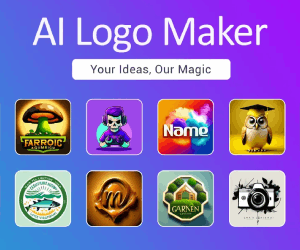BabyAGI Reviews:an AI-powered task management system
About BabyAGI
BabyAGI is a Python project that demonstrates an AI-powered task management system that uses OpenAI and Pinecone APIs to create, prioritize, and execute tasks.
AI technology
BabyAGI is an AI-powered agent that uses OpenAI and vector databases like Chroma and Weaviate to perform tasks. It simplifies task creation, prioritization, and execution based on your instructions and previous task results. It has natural language processing capabilities, much like other popular chatbots such as ChatGPT. BabyAGI generates new tasks and stores/retrieves task results using Chroma and Weaviate. The GitHub repository contains all the details needed to install BabyAGI on your machine.
Objective
This Python script is an example of an AI-powered task management system. The system uses OpenAI and vector databases such as Chroma or Weaviate to create, prioritize, and execute tasks. The main idea behind this system is that it creates tasks based on the result of previous tasks and a predefined objective. The script then uses OpenAI’s natural language processing (NLP) capabilities to create new tasks based on the objective, and Chroma/Weaviate to store and retrieve task results for context. This is a pared-down version of the original Task-Driven Autonomous Agent (Mar 28, 2023).
How It Works
The script works by running an infinite loop that does the following steps:
- Pulls the first task from the task list.
- Sends the task to the execution agent, which uses OpenAI’s API to complete the task based on the context.
- Enriches the result and stores it in Chroma/Weaviate.
- Creates new tasks and reprioritizes the task list based on the objective and the result of the previous task.

The execution_agent() function is where the OpenAI API is used. It takes two parameters: the objective and the task. It then sends a prompt to OpenAI’s API, which returns the result of the task. The prompt consists of a description of the AI system’s task, the objective, and the task itself. The result is then returned as a string.
The task_creation_agent() function is where OpenAI’s API is used to create new tasks based on the objective and the result of the previous task. The function takes four parameters: the objective, the result of the previous task, the task description, and the current task list. It then sends a prompt to OpenAI’s API, which returns a list of new tasks as strings. The function then returns the new tasks as a list of dictionaries, where each dictionary contains the name of the task.
The prioritization_agent() function is where OpenAI’s API is used to reprioritize the task list. The function takes one parameter, the ID of the current task. It sends a prompt to OpenAI’s API, which returns the reprioritized task list as a numbered list.
Finally, the script uses Chroma/Weaviate to store and retrieve task results for context. The script creates a Chroma/Weaviate collection based on the table name specified in the TABLE_NAME variable. Chroma/Weaviate is then used to store the results of the task in the collection, along with the task name and any additional metadata.
How to Use
To use the script, you will need to follow these steps:
- Clone the repository via
git clone https://github.com/yoheinakajima/babyagi.gitandcdinto the cloned repository. - Install the required packages:
pip install -r requirements.txt - Copy the .env.example file to .env:
cp .env.example .env. This is where you will set the following variables. - Set your OpenAI API key in the OPENAI_API_KEY and OPENAI_API_MODEL variables. In order to use with Weaviate you will also need to setup additional variables detailed here.
- Set the name of the table where the task results will be stored in the TABLE_NAME variable.
- (Optional) Set the name of the BabyAGI instance in the BABY_NAME variable.
- (Optional) Set the objective of the task management system in the OBJECTIVE variable.
- (Optional) Set the first task of the system in the INITIAL_TASK variable.
- Run the script:
python babyagi.py
All optional values above can also be specified on the command line.
Supported Models
This script works with all OpenAI models, as well as Llama and its variations through Llama.cpp. Default model is gpt-3.5-turbo. To use a different model, specify it through LLM_MODEL or use the command line.
Llama
Llama integration requires llama-cpp package. You will also need the Llama model weights.
- Under no circumstances share IPFS, magnet links, or any other links to model downloads anywhere in this repository, including in issues, discussions or pull requests. They will be immediately deleted.
Once you have them, set LLAMA_MODEL_PATH to the path of the specific model to use. For convenience, you can link models in BabyAGI repo to the folder where you have the Llama model weights. Then run the script with LLM_MODEL=llama or -l argument.
To help the BabyAGI community stay informed about the project’s progress, Blueprint AI has developed a Github activity summarizer for BabyAGI. This concise report displays a summary of all contributions to the BabyAGI repository over the past 7 days (continuously updated), making it easy for you to keep track of the latest developments.
FAQ
What is the use of BabyAGI?
In conclusion, BabyAGI is an innovative AI tool that automates complex decision-making tasks in various use cases, such as creative writing, research and to-do tasks.
What is baby AGI?
Developed by Yohei Nakajima, Baby AGI is a marvel of autonomous artificial general intelligence. This ingenious entity thrives on your fed objectives, utilizing a Python script that draws upon technologies from OpenAI, Pinecone, LangChain, and Chroma.
What is the difference between Auto GPT and baby AGI?
Baby AGI, or Baby Artificial General Intelligence, focuses on mimicking the cognitive abilities of human infants. On the other hand, Auto GPT, which stands for Automated Generative Pre-trained Transformer, involves training AI models, particularly GPT-4, to perform various tasks without task-specific fine-tuning.
Is BabyAGI open source?
The repository includes Python scripts, Dockerfiles, and requirements. txt files for installation, and its underlying code and features are continuously updated and improved by the development community. The tool is open-source and free to use.
Is baby AGI free?
Baby AGI is free; anyone can use it without paying fees.

